Blasphemous II is a non-linear platformer set in a medieval fantasy world about to be thrust back into religious horror and violence. Following the events of the first Blasphemous, the Penitent One has killed the gods of Cvstodia, bringing an end to the Grievous Miracle that inflicted ironic and often cruel blessings on their worshippers. Aeons later, a great beating heart appears in the sky and the City of the Blessed Name is lifted from the ground on the shoulders of three massive statues. With these events seemingly heralding the Miracle’s return, the Penitent One is revived in their tomb and sets out to save the world from the old Miracle and the new god it might create.
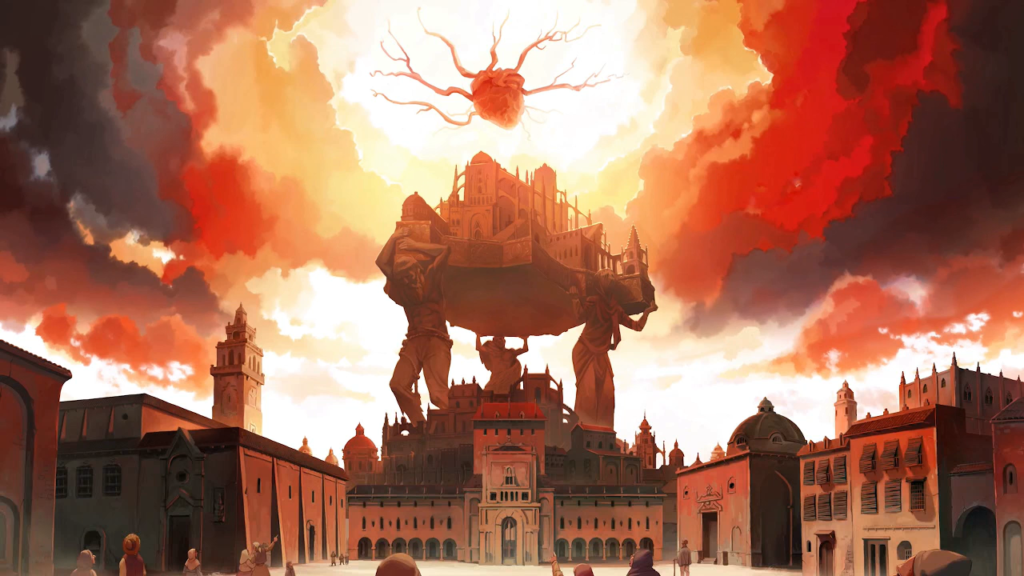
It’s worth taking a moment to recall some of the design decisions which made the first Blasphemous one of the more unconventional entries in the crowded non-linear platforming category. It defies many of the most recognizable design tropes. The Penitent One never learns to double jump or air dash. What movement-enhancing skills they do learn are optional, used only to reach the collectables needed to fully understand Cvstodia’s grotesque inhabitants and reach one hundred percent completion. The course taken on this quest is not prescribed; two sets of bosses may be challenged in any order if I am able to guide the player character through their lairs. For all inaccessible doors the Penitent One may encounter, the doors they can reach will definitively lead another step towards the end of the Miracle. Even now, years after its original release, the first Blasphemous is still one of the most interesting and unique non-linear platformers I can choose to play.
When the Penitent One emerges from their tomb in Blasphemous II, it appears not much has changed from the first installment. It seems graphically identical—hardly a negative, since the first is still one of the most bloody and beautiful pixel art videogames on any platform. The Penitent One is responsive to my inputs, moving left and right and jumping with no sense of delay.
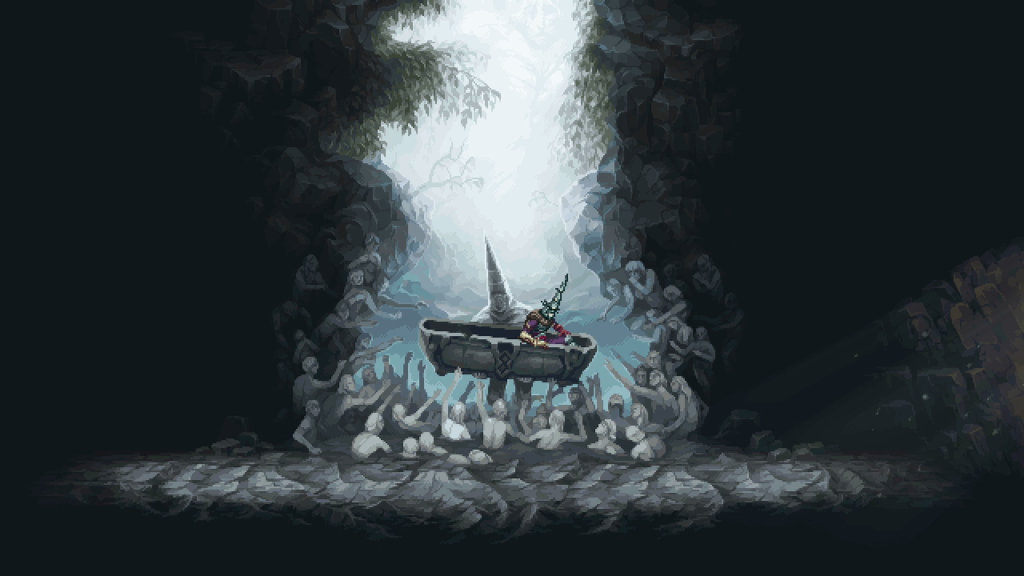
At the top of the screen are red and blue meters representing The Penitent One’s health, the amount of damage they can take before dying and returning to the last Prie Dieu altar, and fervour, which powers magical attacks called prayers. Health is restored with bile flasks, one-use glass receptacles which are replenished at altars. Fervour is generated each time the player character strikes an enemy with his weapon. That is the one thing missing: Mea Culpa, the heavy sword the Penitent One wielded in their first quest against the Miracle.
This problem is solved as soon as the Penitent One enters the first room outside their tomb. There they are presented with a choice of three different weapons, each with unique functions and bearing one of Blasphemous’ wonderfully overwrought names.
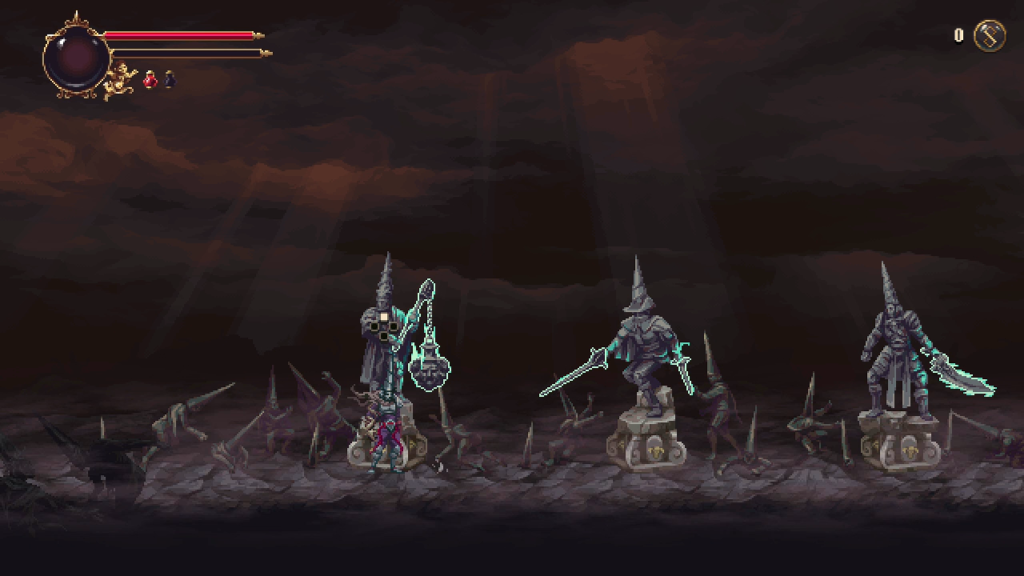
Ruego al Alba is the balanced weapon and functions most like the lost Mea Culpa. The sword’s unique action lets The Penitent One block an attack and respond with a powerful counterattack. It can also temporarily increase its damage in exchange for a small amount of the player character’s health. Another option is Sarmiento and Centella, a rapier and dagger pair which is rather weak but makes up for it with a fast attack speed. They let the Penitent One attack while dashing forward, and successive attacks build up electrical charges which increase the damage of each blow. The last option is Veredicto, a massive censer chained to a pole the Penitent One wields as a slow and powerful flail. In exchange for a constant fervour drain, it can be lit on fire to deal additional damage. To make up for the drained fervour, Veredicto also generates much more with each attack, making this an ideal weapon when I want to use lots of magical prayers.
The Penitent One can take any one of these new weapons for their new journey, but only one. The choice does not remain exclusive for long. The two weapons not chosen are discovered within a few hours of exploring the world beyond the tomb. Once multiple weapons are in the Penitent One’s possession, they can be switched at any time with the press of a button. All three are needed because they have other abilities outside their combat applications, each necessary for overcoming Blasphemous II’s new platforming obstacles.
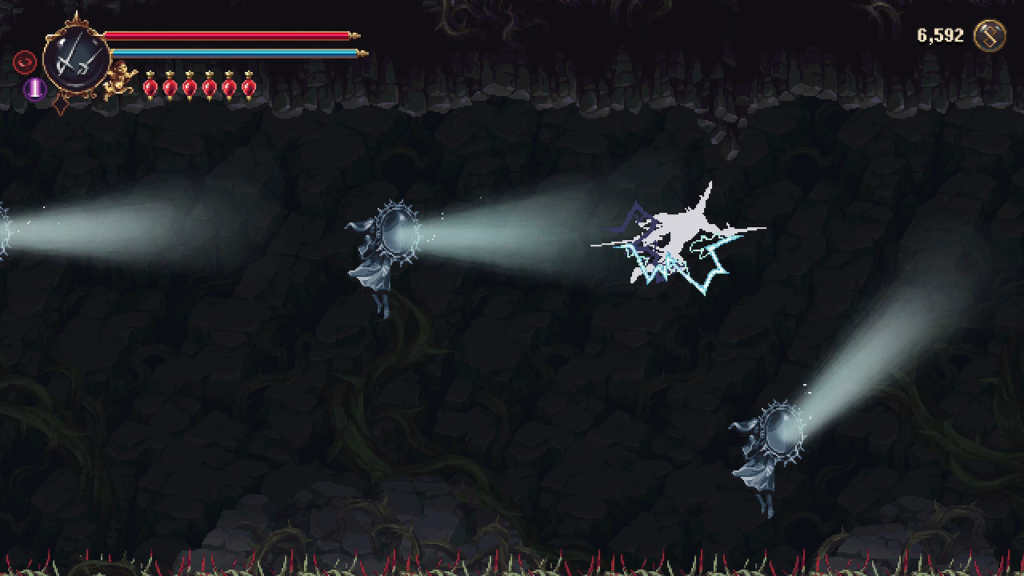
In many places around the world, The Penitent One encounters barriers that appear to be wood, but come alive like writhing flesh when they come close. Performing a downward thrusting attack from a great height with Ruego al Alba is the only way to destroy them. Some gaps are filled with groups of mirrors supported by floating angels. Striking one with Sarmiento and Centella teleports the Penitent One through the air in the direction the mirror points. Other gaps are dotted with swirling bubbles of mercury. Striking a nearby bell with Veredicto fills the room with a wave of energy which temporarily transforms the mercury into platforms the Penitent One may jump across.
Often, multiple weapon abilities must be combined to solve a platforming challenge. Sarmiento and Centella must be used in conjunction with mirrors to reach a height sufficient for Ruego al Alba’s downthrust. Bubbles of mercury must be solidified with sound waves generated by Veredicto to reach a distant mirror. The three weapons and their unique functionality both in combat and for traversing the world’s obstacles are the best ideas in Blasphemous II, especially compared to its predecessor.
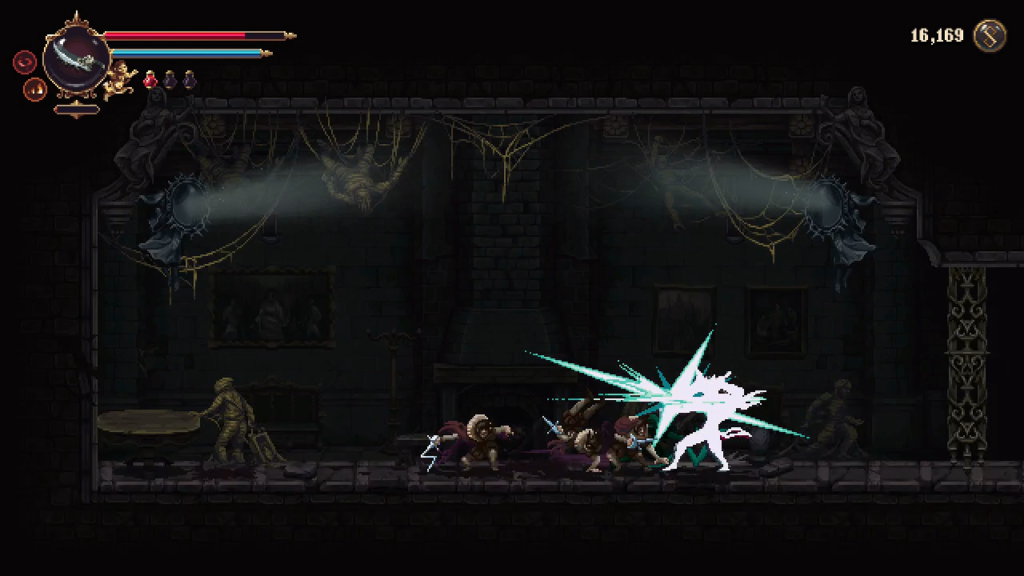
As the Penitent One explores the world, they discover a bevy of collectables which improves their capabilities. While still feeling numerous, their quantity is not as overwhelming in Blasphemous II and most are now turned in to a few non-player characters located in a central hub.
These NPCs showcase more of Blasphemous’ signature grotesque designs. A standout is Our Lady of the Chalices, a virginal woman whose torso seems to grow out of the floor of her church while tiny cherubs tug playfully at her hair and outstretched hand. As the Penitent One exchanges chalices for increases to their maximum health, the cherubs literally peel back Our Lady’s skin, revealing a red skeleton underneath. By the time the Penitent One finds and delivers every hidden chalice, all of her skin has been peeled away and left on the floor like a discarded coat, leaving the skeleton and some incongruous tissue revealed underneath. Her condition does not seem to worry or deter Our Lady of the Chalices.
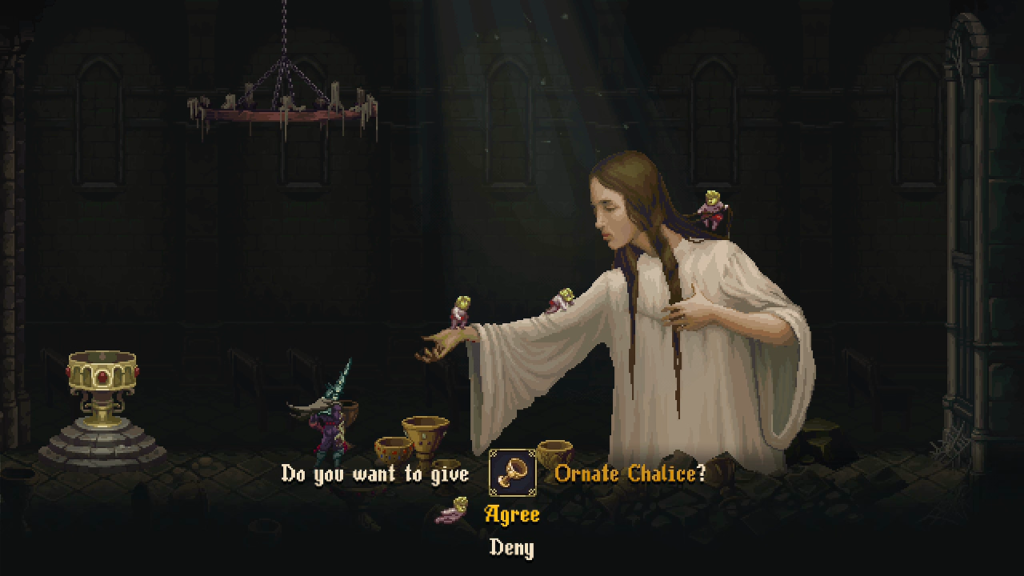
In a workshop above Our Lady of the Chalices is the most consequential new NPC in Blasphemous II. Master Sculptor Montañés is a blind artisan divinely charged with carving wooden figures of the world’s saints. In exchange for Marks of Martyrdom, a new currency earned by defeating enemies or discovering them in caches hidden around the world, Montañés can expand an object called the Altarpiece of Favours. The Penitent One discovers several dozen of the Master Sculptor’s figures during their quest, and as many as eight of them may be slotted into this Altarpiece once it is fully expanded. Each figure confers a modified ability to the Penitent One.
When The Penitent One first meets Montañés, he gifts them with a figure of the Traitor, which boosts the Penitent One’s damage by a small amount. Other statues are more specialized. The Partisan widens the timing window to block attacks, while the Thirst increases the Penitent One’s strengths when they have used all their bile flasks. Some figures gain additional bonuses when they are placed side-by-side, encouraging me to experiment with where they are placed in the Altarpiece. Pairing the Punished One with the Demented One, figures which both improve Ruego al Alba, grants an additional damage boost to that weapon. With the proper arrangement, the figures can boost my favored weapon into catastrophic damage potential with the potential downside of not improving any of the Penitent One’s other attributes. Placing the figures in the Altarpiece in certain configurations has other, more mysterious effects as well.
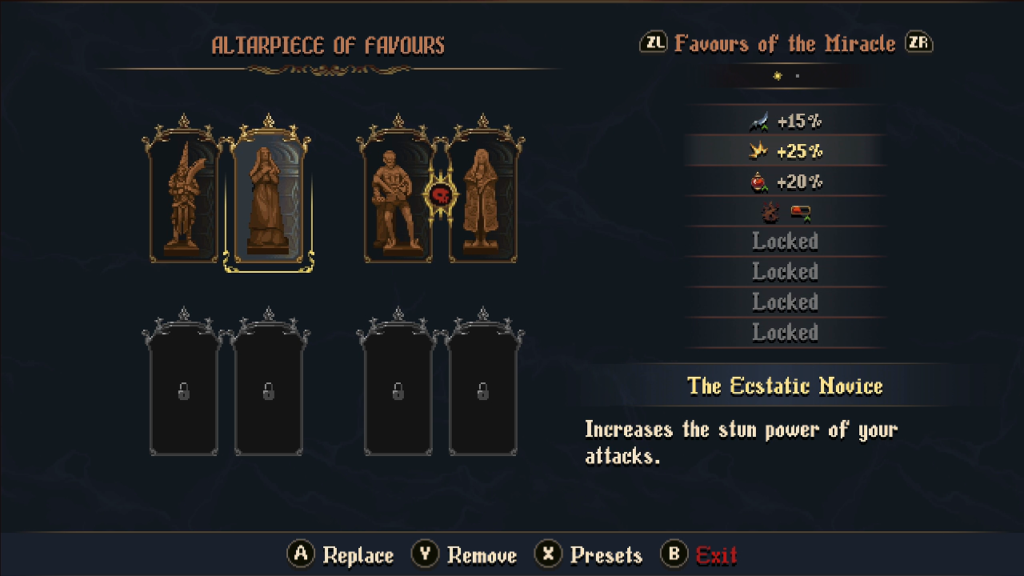
Exploring the first few areas of this new world, discovering the ways the three new weapons allow the Penitent One to interact with them, and turning in the collectables rewarded for thorough exploration are the best times I have with Blasphemous II. It feels narrowly similar in scope and design to its predecessor, especially in how the Penitent One is first directed to explore an open space to defeat three bosses.
All three of these bosses would fit right in with the lineup from the first Blasphemous. They tower over the Penitent One and use awesome screen-filling attacks that take all of my platforming skill to avoid. They are difficult, but not unfairly so, eventually overcome when I learn their patterns and better understand how to respond with the Penitent One’s new abilities. They can be defeated in any order in which they happen to be discovered, and defeating all three unlocks a door which opens the second half of the world.
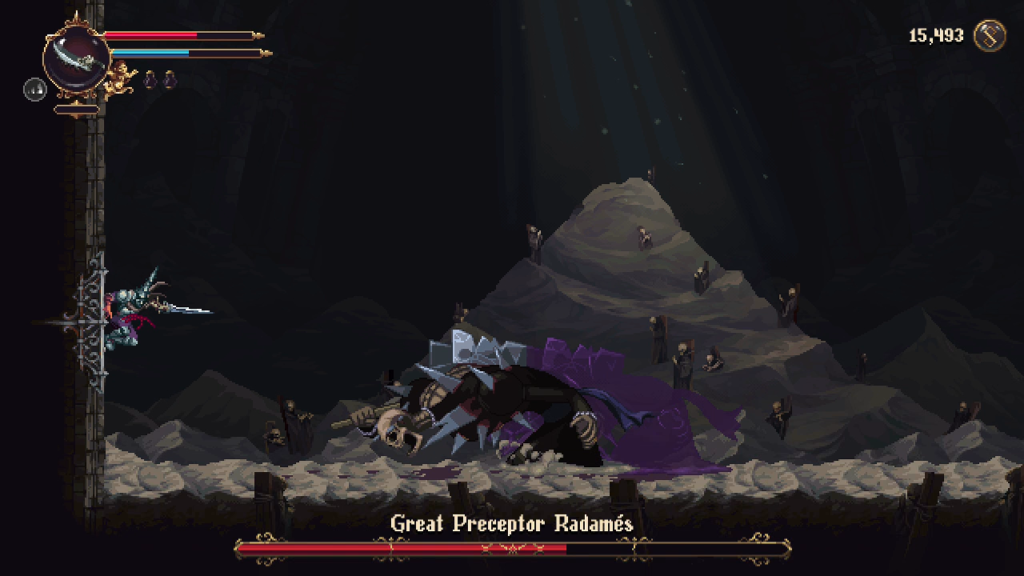
While searching for and defeating the first set of bosses, I gain a sense that Blasphemous II is consciously trying to be simpler than its predecessor. As I progress beyond them, this sense of conscious simplicity expands into one of complacent safety. After climbing to the top of the central tower in Elevated Temples, the Penitent One is tasked with freeing five black doves by killing the bosses who carry the keys to their cages.
This progression echoes the campaign in the first Blasphemous, which also sent the Penitent One in search of a new set of bosses after defeating a first trio. There is a catastrophic key difference: Blasphemous II allows no choice about the order in which the second set of bosses are found and defeated. The level design accomplishes this partly by only making a bridge to a certain area appear after the Penitent One climbs to the top of the Elevated Temples. An arbitrarily accessible bridge is disappointing enough, but the other method used to control the Penitent One’s progress is a double jump and an air dash.
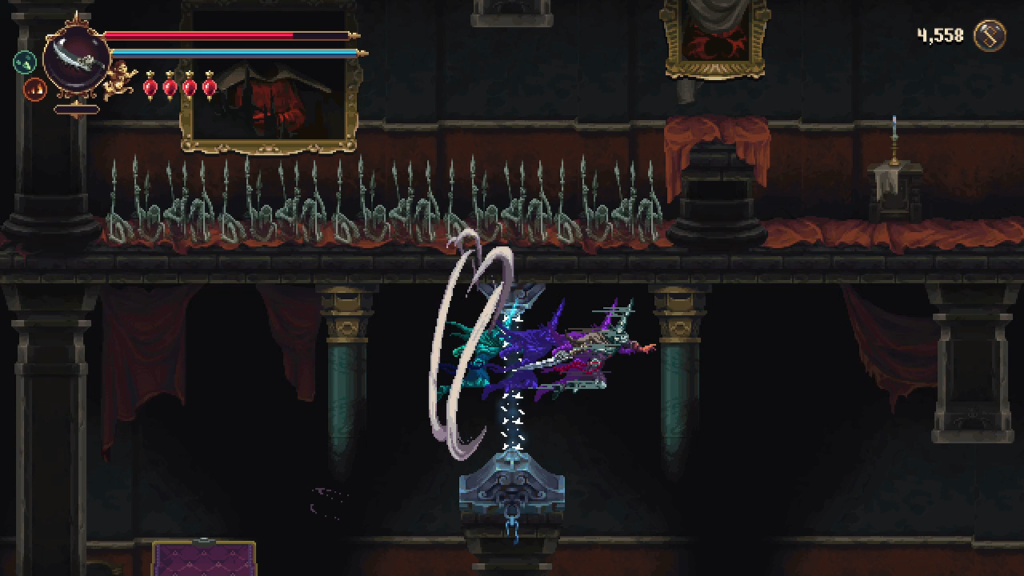
I admire the first Blasphemous for being brave enough to never grant the Penitent One these staple abilities. It defied non-linear platforming dogma, creating levels and enemies that eschewed the need to jump again in midair while still feeling like an authentic part of the genre. Blasphemous II including a double jump and air dash feels like a capitulation. It feels like giving up. Where the first Blasphemous feels bold and daring—blasphemous, even—Blasphemous II’s latter half feels disconcertingly ordinary. It’s as though it is saying, “this is my non-linear platformer. There are many like it, but this one is mine.”
To make up somewhat for Blasphemous II’s safe and familiar design, it is a more difficult game than its predecessor. It is also harder in the right ways. The first Blasphemous is at its most difficult during its platforming sections as falling into a spiked or bottomless pit is an instant kill for the Penitent One. In Blasphemous II, they merely take a small amount of damage and return to where they were standing before their fall. Jumping and grabbing onto ladders is also much more responsive. This sequel improves on the platforming in every way it should have.
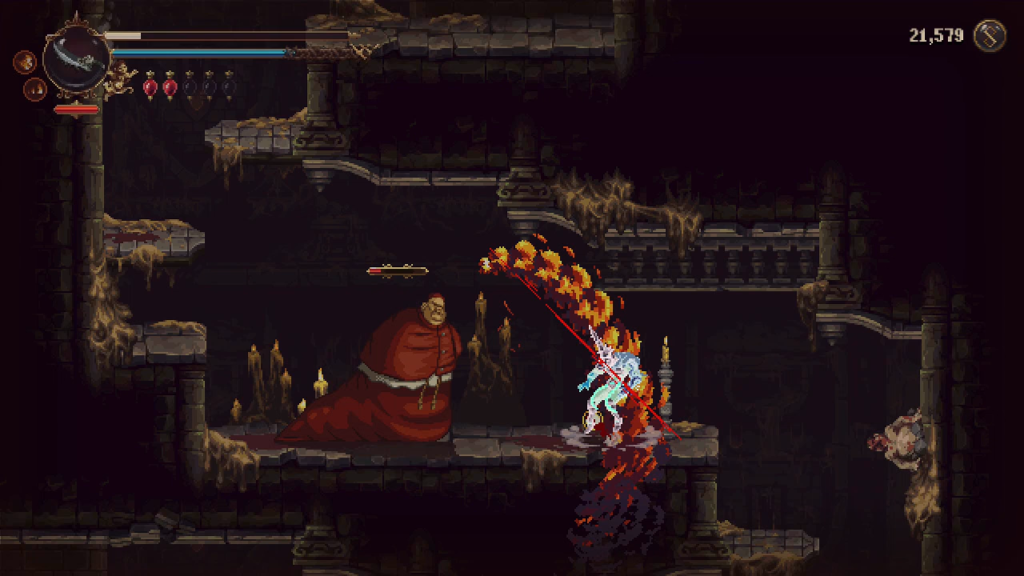
It’s in combat where Blasphemous II finds most of its increased difficulty. The Penitent One encounters new enemies at several locations that deal intimidating amounts of damage. The only way past them is through pure skill. Every move must be purposeful and considered; this isn’t a videogame that can be button-bashed through. Many enemies are perfectly capable of responding to a single mistake with a fatal attack. This is to say nothing of the penultimate boss, an encounter so over-the-top I have to resort to a cheap trick to get past him. If I have ever felt that the combat in the first Blasphemous is too easy, Blasphemous II is here to satisfy my complaints. And I am satisfied indeed.
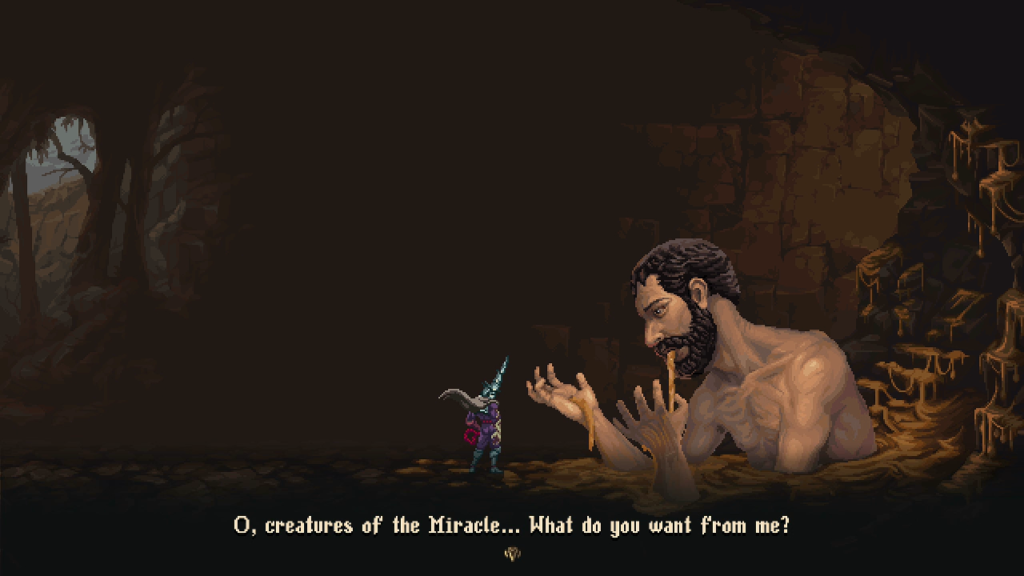
Blasphemous II is an exceptionally safe sequel. It does many of the same things its predecessor did in many of the same ways. Even its premise of the Miracle returning and the Penitent One also returning to stop it once more has a weary sense of obligatory sameness to it. I would be more forgiving about these weaknesses if its predecessor wasn’t so brave in defying the conventions of non-linear platformers. Blasphemous II even takes a step backwards in embracing the double jumping and air dashing antics it previously refused to indulge. Though I am disappointed, I find that my feelings towards it are not negative. It still maintains its predecessor’s top-tier production quality, and it does show some flashes of exciting ideas, particularly with the new weapon trio. It’s also a satisfying challenge. I don’t regret a moment playing it, I only regret the feeling I’ve played many like it before.